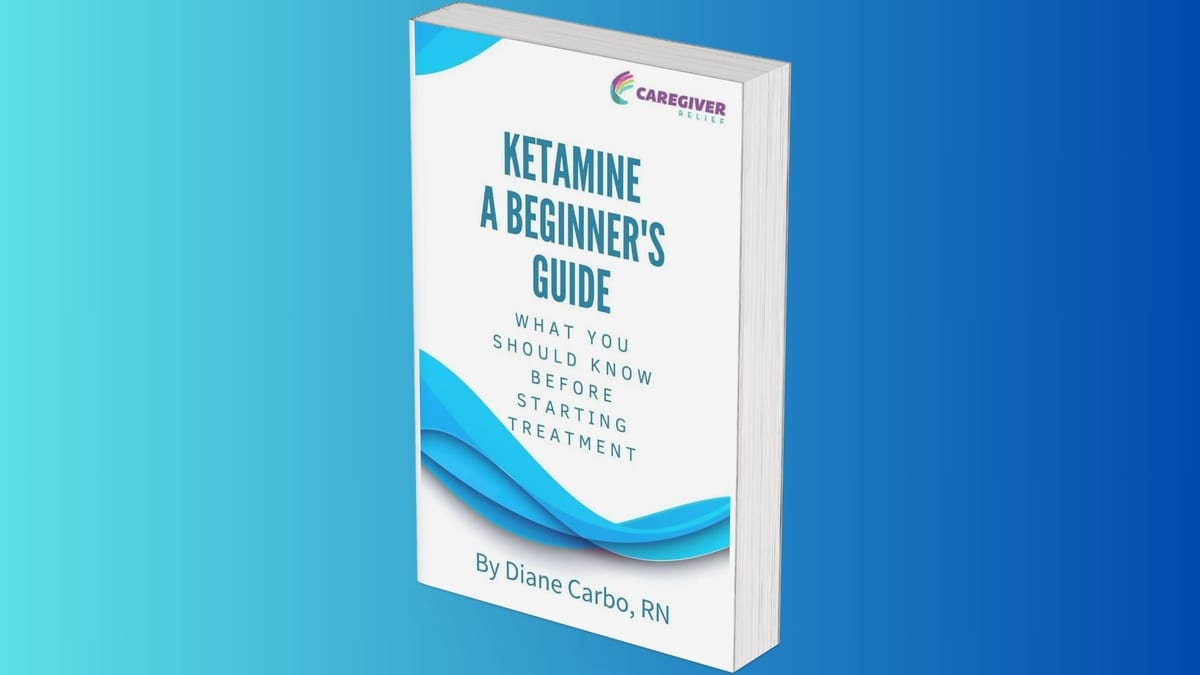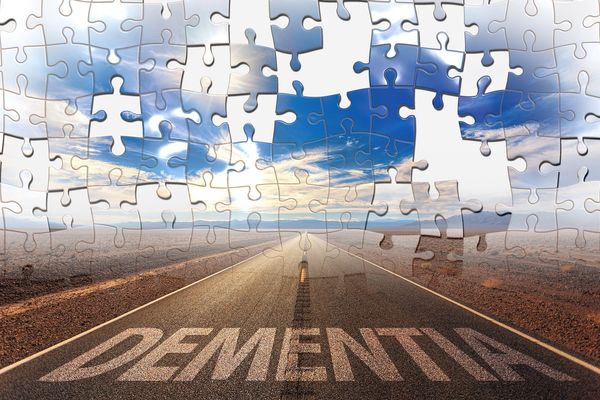Ketamine in Depression: A Beginner's Guide - What You Should Know Before Starting Treatment
Discover the fascinating world of ketamine, a drug with a rich history and diverse applications. In "Ketamine: A Beginner's Guide," we delve deep into the unique properties and potential benefits of this intriguing substance, offering essential insights for those considering its use


“Ketamine: A Beginner’s Guide - What You Should Know Before Starting Treatment”
Discover the fascinating world of ketamine, a drug with a rich history and diverse applications. In “Ketamine: A Beginner’s Guide,” we delve deep into the unique properties and potential benefits of this intriguing substance, offering essential insights for those considering its use for medical purposes or those curious about its recreational allure.
Ketamine, initially synthesized as a potential replacement for the hallucinogen PCP in 1962, has since found a prominent place in medicine and recreation. Unlike traditional anesthetics, ketamine boasts a wide margin of safety and offers a trifecta of effects: pain relief, sedation, and amnesia. It induces a dissociative state, characterized by a lack of pain sensation and unconsciousness while allowing the individual to maintain open eyes and involuntary limb movements.
Our journey into the world of ketamine begins with an exploration of its origins and the fascinating story of its development. Originally used to treat American soldiers during the Vietnam War, ketamine has evolved into a crucial tool in both veterinary and human medicine. It is commonly employed as an anesthetic for children and individuals undergoing minor surgery and has displayed remarkable promise in the treatment of depression and chronic pain.
What sets ketamine apart is its unique combination of effects. It provides pain relief, sedation, and amnesia simultaneously, inducing a dissociative state that can include open eyes, jumping eye movements, and involuntary limb movements. We delve into the science behind ketamine’s mechanism of action, shedding light on how it alters neural activity and neurotransmitter uptake in the brain.
However, ketamine also has a darker side, as it has gained popularity as a recreational drug due to its rapid hallucinogenic effects. Users may find themselves in the infamous “K hole,” experiencing a profound separation of mind and body. We uncover the street names for ketamine and the various methods of consumption, along with the potential risks and consequences of prolonged abuse, including cognitive dysfunction, paranoia, depression, and even death. The effects of ketamine during treatment can include dissociation and sedation, while the potential long-term implications of repeated dosing are still being researched, particularly concerning mental health conditions like depression and anxiety.
As we delve deeper into the world of ketamine, we explore its place in the realm of dissociative anesthetics, comparing it to drugs like PCP, dextromethorphan (DXM), and nitrous oxide. Ketamine’s unique profile, with its pain-relieving properties, amnesia induction, and lack of consciousness, sets it apart from its counterparts.
Ketamine is often referred to as a “dirty drug” because of its widespread effects on multiple brain systems, making it a versatile medication with diverse applications. We uncover its role as a potent anti-inflammatory agent and its long-standing use in veterinary medicine, where it provides safe anesthesia for a range of animals.
For those concerned about potential addiction, we clarify that ketamine is not physically addictive, although tolerance can develop over time, necessitating higher doses for the same dissociative effect. We also explore the various methods of administration, including injection, intravenous delivery, and the intranasal spray Esketamine, as well as its availability in lozenges and capsules.
“Ketamine: A Beginner’s Guide” is your comprehensive introduction to the world of ketamine. Whether you’re considering its use for medical purposes or simply seeking to understand its intriguing history and effects, this book equips you with the knowledge you need to navigate the complex landscape of this multifaceted substance. Get ready to embark on a journey of discovery and enlightenment with “Ketamine: A Beginner’s Guide.”

Understanding Ketamine and Its Uses
Ketamine has long been recognized for its role as an anesthetic and pain reliever, but its potential extends far beyond the operating room. In recent years, ketamine has emerged as a promising treatment for severe depression, particularly for those who have not found relief with traditional therapies. This condition, known as treatment-resistant depression, affects millions and poses a significant challenge to mental health professionals.
Ketamine works by blocking the action of glutamate, a neurotransmitter in the brain. This blockade can help reduce excessive brain activity, producing a calming effect. Moreover, ketamine has been shown to promote the growth of new neural connections, which can enhance mood and alleviate symptoms of depression. This dual action makes ketamine a unique and powerful tool in the fight against severe depression.
What is Treatment-Resistant Depression?
Treatment-resistant depression (TRD) is a form of major depressive disorder that does not respond to standard treatments, such as antidepressants and psychotherapy. This condition affects millions of people worldwide and can severely impact an individual’s quality of life, relationships, and overall well-being. TRD is a significant public health concern, as those who suffer from it often experience prolonged and intense depressive episodes.
The limited effectiveness of traditional treatments for TRD has spurred ongoing research into new and innovative therapies. Ketamine has shown promise in clinical trials, offering hope to those who have struggled to find relief. As researchers continue to explore the potential of ketamine and other novel treatments, the goal is to provide more effective options for individuals battling this challenging condition.
Benefits of Ketamine Therapy
Ketamine therapy has garnered attention for its rapid and profound effects on depression, especially in individuals who have not responded to other treatments. One of the most notable benefits of ketamine therapy is the swift improvement in mood and reduction of depressive symptoms. Many patients report feeling better within hours of treatment, a stark contrast to the weeks or months it can take for traditional antidepressants to take effect.
In addition to alleviating depressive symptoms, ketamine therapy has been shown to reduce suicidal ideation, providing a critical lifeline for those in acute distress. The overall improvement in mental health can be life-changing, offering renewed hope and functionality. Ketamine therapy can also be integrated with other treatments, such as psychotherapy and medication, to create a comprehensive and personalized treatment plan.
Ketamine Treatment Options
When it comes to ketamine treatment, there are several options available to suit different needs and circumstances. Intravenous (IV) infusions are one of the most common methods, typically administered in a clinical setting. These infusions can provide rapid relief from depressive symptoms, making them a popular choice for those in urgent need of intervention.
Nasal sprays and oral tablets are also available as alternative methods of administration. These options can be used in conjunction with other treatments and offer more flexibility for ongoing management of depressive symptoms. The choice of treatment will depend on individual factors, including the severity of depression, response to previous treatments, and personal preferences. By working closely with healthcare providers, patients can find the most effective and suitable ketamine treatment plan for their needs.
Ketamine Treatment for Depression: Frequently Asked Questions
General Information about Ketamine for Depression
What is ketamine and how does it work to treat depression?
Ketamine is an anesthetic drug that has been found to rapidly improve symptoms of depression, particularly in treatment-resistant depression and major depressive disorder. It works by modulating glutamate release, which affects brain plasticity and mood regulation.
What types of depression can ketamine treat?
Ketamine is primarily used for treatment-resistant depression, major depressive disorder, bipolar disorder, and other depressive disorders. It is also considered for patients with severe depression and suicidal ideation.
Is ketamine FDA-approved for depression treatment?
Ketamine itself is not FDA-approved for depression, but esketamine nasal spray (a ketamine derivative) has been approved for treatment-resistant depression. Ketamine is used off-label for mental health conditions in clinical settings.
What is treatment-resistant depression?
Treatment-resistant depression refers to depression that does not respond to at least two other treatments or medications. Ketamine has shown promising antidepressant effects in such cases.
Types of Ketamine Treatments
What are the different ways ketamine is administered?
Ketamine can be administered through several methods:
- IV ketamine (ketamine infusions): Delivered via intravenous therapy for rapid relief.
- Intranasal ketamine (nasal spray): FDA-approved esketamine nasal spray for treatment-resistant depression.
- Compounded ketamine products: Less common and usually administered under healthcare professional supervision.
How does IV ketamine differ from intranasal ketamine?
IV infusions typically provide faster and stronger effects, whereas intranasal administration (e.g., esketamine) is more accessible and has FDA approval.
What is repeated dosing, and why is it necessary?
Repeated dosing refers to receiving multiple ketamine treatments over time to maintain the initial response. Studies suggest that multiple sessions are needed for sustained relief in patients with resistant depression.
Ketamine Treatment Outcomes and Effects
How quickly does ketamine start working for depression?
One of ketamine’s benefits is its rapid onset. Many patients report improvement in depressive symptoms and depressed mood within hours to a day after treatment.
What are the antidepressant effects of ketamine?
Ketamine has shown significant antidepressant effects in randomized controlled trials and open-label studies, reducing depression scores in treatment-resistant major depression and affective disorders.
How effective is ketamine compared to a placebo group?
Clinical trials, including placebo-controlled and human trials, demonstrate that ketamine significantly reduces depression severity compared to placebo groups.
Can ketamine help with suicidal ideation?
Yes, ketamine has been shown to rapidly reduce suicidal ideation in patients with severe or treatment-resistant depression.
Ketamine Safety and Side Effects
12. What are the common side effects of ketamine therapy?
Side effects may include:
- Dissociative effects (e.g., feeling detached or “out of body”)
- High blood pressure or fluctuations in vital signs
- Nausea, dizziness, or confusion
Can ketamine therapy affect blood pressure?
Yes, ketamine can cause high blood pressure during treatment, so patients are closely monitored for changes in vital signs during therapy.
Is ketamine therapy addictive?
While ketamine itself has a history of recreational misuse, clinical use under supervision reduces the risk of substance abuse. However, individuals with substance use disorders should consult healthcare providers before treatment.
What are ketamine metabolites, and how do they affect treatment?
Ketamine metabolites are compounds produced when the body processes ketamine. These metabolites may contribute to its antidepressant effects.
Clinical Trials and Research
Is there strong evidence for ketamine as a treatment for depression?
Yes. Systematic reviews, randomized controlled trials, and open-label studies have shown ketamine’s efficacy in treating treatment-resistant depression and reducing depression severity.
What is the placebo effect in ketamine trials?
Some patients in placebo-controlled studies report improvements due to psychological expectations, but ketamine’s effects are notably greater than those seen in placebo groups.
Are there ongoing clinical trials for ketamine therapy?
Yes, researchers continue to explore ketamine’s role in treating psychiatric disorders, unipolar depression, bipolar disorder, and other mental health conditions.
Practical Considerations
What happens during a ketamine therapy session?
In a certified doctor’s office or ketamine clinics, patients typically receive ketamine via IV infusion, nasal spray, or oral formulations under close monitoring of their vital signs and mental state.
How do I find a certified provider or ketamine clinic?
Speak to healthcare professionals or search for licensed ketamine clinics in your area. Treatment should always be supervised by qualified providers.
Does insurance cover ketamine therapy?
Unfortunately, insurance rarely covers ketamine therapy since it is often an off-label treatment.
What should I expect regarding treatment response?
While many patients see significant improvement, ketamine response varies based on individual factors such as depression severity and previous treatment history.
Are there alternatives to ketamine treatment for depression?
Yes. Other treatments for depression include traditional antidepressants, psychotherapy, electroconvulsive therapy (ECT), and transcranial magnetic stimulation (TMS).
Ketamine and Mental Health Conditions
Can ketamine help with other mental health conditions?
Ketamine is being explored for mood disorders, affective disorders, and other psychiatric disorders. Research is ongoing.
What should I discuss with my healthcare provider before starting ketamine treatment?
Discuss your medical history, current mental health conditions, any substance use disorders, and potential risks like high blood pressure or opioid receptor interactions.
Summary
Ketamine offers a promising treatment option for treatment-resistant depression and major depressive disorder, particularly when other therapies have failed. Its rapid onset and antidepressant effects make it a valuable tool for managing severe depressive symptoms and suicidal ideation. However, treatment should always be conducted in a safe, monitored environment by experienced healthcare providers.
For more information, consult certified ketamine clinics or speak to healthcare professionals about whether ketamine therapy is right for you.




